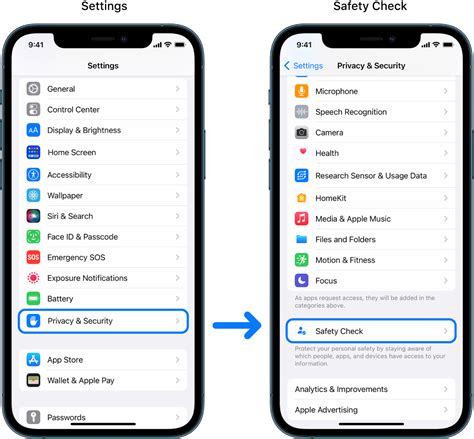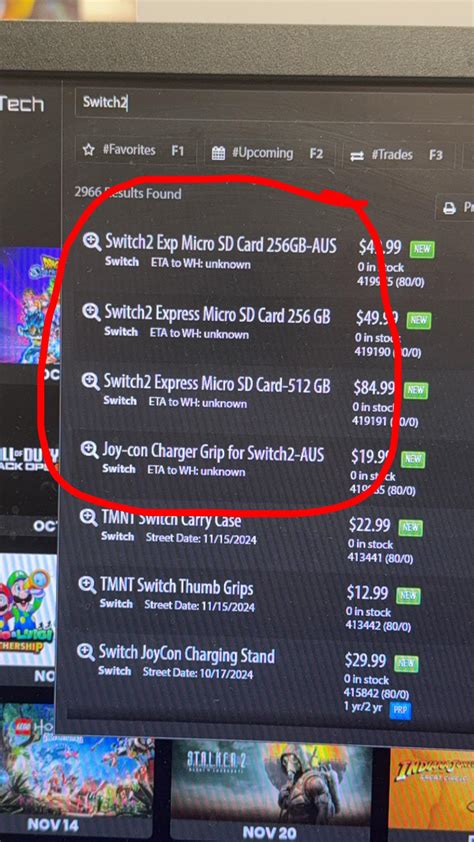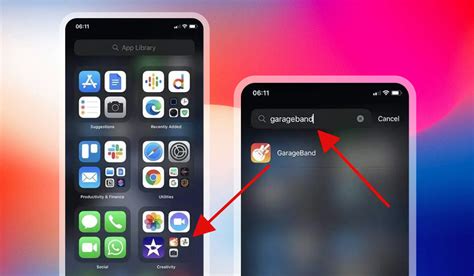
The future of physical game media for Nintendo’s rumored Switch 2 is uncertain, with industry insiders expressing skepticism about the continued use of game cartridges, despite fan desire.
The potential abandonment of cartridges for the next-generation Nintendo console has sparked debate among gamers, with many expressing disappointment at the prospect of a purely digital future. While Nintendo has not officially announced the Switch 2 or its specifications, speculation based on industry leaks and reports suggests a shift away from physical media, according to Yahoo News.
“While official details remain scarce, rumblings within the industry suggest a possible move away from cartridges, potentially favoring digital downloads or other storage solutions,” the Yahoo News article stated. This shift would mark a significant departure from Nintendo’s strategy with the original Switch, which embraced cartridges as a core component of its hybrid console design.
Fan Reaction and Concerns
The potential move to a digital-only format has been met with considerable resistance from Nintendo fans. Many gamers value the tangible ownership and collectibility that physical cartridges provide. Concerns have also been raised about the potential for digital game prices to remain high, the limited lifespan of digital storefronts, and the impact on game preservation.
“Fans have voiced concerns about the potential loss of physical ownership, the impact on resale value, and the long-term accessibility of digital games,” Yahoo News reported. These concerns echo broader debates within the gaming community about the increasing dominance of digital distribution and its implications for consumer rights.
One of the main arguments in favor of physical media is the ability to resell games, a practice that is impossible with digital purchases tied to a specific account. The resale market provides an opportunity for gamers to recoup some of their investment in games they have finished playing, as well as offering a more affordable option for purchasing games.
Additionally, physical cartridges offer a sense of ownership and collectibility that digital downloads cannot replicate. Many gamers enjoy building physical collections of their favorite games, displaying them on shelves, and sharing them with friends. The tangible nature of cartridges also provides a visual reminder of the games they have played and the memories associated with them.
Game preservation is another significant concern for proponents of physical media. Digital storefronts are not permanent, and games can be removed from sale or become unavailable due to licensing issues or server shutdowns. Physical cartridges, on the other hand, can be preserved and played indefinitely, provided the hardware to play them is available.
Industry Trends and Nintendo’s Strategy
The gaming industry has been gradually shifting towards digital distribution for several years, driven by factors such as convenience, cost savings, and the ability to offer subscription services. Digital sales now account for a significant portion of overall game revenue, and many major publishers have embraced digital-only releases.
However, Nintendo has traditionally been more resistant to the shift towards digital distribution, maintaining a strong focus on physical media. The original Switch was designed with cartridges in mind, and Nintendo has continued to release most of its games in both physical and digital formats.
One possible reason for Nintendo’s reluctance to abandon physical media is its appeal to a wider audience, including families and younger gamers who may not have access to high-speed internet or may prefer the simplicity of cartridges. Physical cartridges also offer a level of parental control, allowing parents to restrict access to certain games by physically removing the cartridges.
Despite Nintendo’s past commitment to physical media, there are signs that the company may be considering a shift towards digital distribution with the Switch 2. The increasing popularity of digital games, the cost savings associated with digital distribution, and the potential to offer subscription services may be factors influencing Nintendo’s decision.
Potential Storage Solutions
If the Switch 2 does abandon cartridges, Nintendo will need to offer alternative storage solutions for games. One possibility is to increase the internal storage capacity of the console, allowing users to download and store a larger number of games. Another option is to support external storage devices, such as SD cards or external hard drives.
However, relying solely on internal storage or external storage devices could present challenges. Internal storage is typically limited and can be expensive to upgrade. External storage devices can be easily lost or damaged, and they may not be as convenient as cartridges for sharing games with friends.
Another potential solution is to offer a digital-only version of the Switch 2 at a lower price point, while still offering a cartridge-based version for gamers who prefer physical media. This would allow Nintendo to cater to both digital and physical game enthusiasts, while also potentially expanding its market reach.
The Impact on Game Developers and Retailers
The potential abandonment of cartridges would have a significant impact on game developers and retailers. Game developers would need to adapt to a purely digital distribution model, which could require changes to their development and marketing strategies. Retailers would need to find new ways to generate revenue from gaming, such as selling digital game codes or offering subscription services.
For independent game developers, the shift to a digital-only format could present both opportunities and challenges. On one hand, digital distribution can lower the barriers to entry, allowing smaller developers to reach a wider audience without the need for physical manufacturing and distribution. On the other hand, the increased competition in the digital marketplace could make it more difficult for independent developers to stand out and generate sales.
Retailers would likely suffer from the loss of physical game sales, which are a significant source of revenue. However, retailers could potentially adapt by focusing on selling digital game codes, accessories, and subscription services. They could also offer services such as game installation and troubleshooting, which could help to attract customers who are less familiar with digital gaming.
Expert Opinions and Analysis
Industry analysts and experts have offered varying perspectives on the potential for the Switch 2 to abandon cartridges. Some analysts believe that the shift to digital distribution is inevitable and that Nintendo will eventually need to embrace it to remain competitive. Other analysts argue that Nintendo’s unique position in the market and its loyal fanbase could allow it to continue supporting physical media for the foreseeable future.
“The move towards digital is undeniable, but Nintendo has always played by its own rules,” said one industry analyst. “They have a unique brand identity and a loyal fanbase that values physical ownership. It’s not clear whether they will follow the industry trend or continue to chart their own course.”
Another expert noted that Nintendo’s decision will likely depend on a variety of factors, including the cost of manufacturing cartridges, the availability of alternative storage solutions, and the feedback from consumers. “Nintendo will need to carefully weigh the pros and cons of abandoning cartridges,” the expert said. “They will need to consider the impact on their brand image, their relationship with retailers, and the preferences of their customers.”
Nintendo’s Silence and Speculation
Nintendo has remained tight-lipped about the specifications of the Switch 2, fueling speculation and debate within the gaming community. The company has not confirmed or denied the rumors about the potential abandonment of cartridges, leaving fans and analysts to draw their own conclusions based on industry leaks and trends.
Nintendo’s silence has only added to the uncertainty surrounding the Switch 2, making it difficult to predict the future of physical game media on the platform. Until Nintendo makes an official announcement, the debate about cartridges will likely continue to rage on.
Impact on the Second-Hand Market
A shift away from cartridges would essentially eliminate the second-hand market for Nintendo games. Currently, players can buy, sell, and trade physical copies of games, creating a thriving ecosystem that benefits both buyers and sellers. This market provides affordable access to games and allows players to recoup some of their investment when they’re finished with a title. Without physical media, the only avenue for acquiring games would be through the Nintendo eShop, limiting consumer choice and potentially driving up prices.
The disappearance of the second-hand market could also impact game discovery. Many players discover new titles through recommendations from friends or by browsing used game stores. The loss of this channel could make it more challenging for smaller or indie developers to gain visibility for their games.
Long-Term Implications for Game Ownership
The move towards digital-only games raises fundamental questions about game ownership. When you purchase a digital game, you’re not actually buying the game itself; you’re buying a license to play the game. This license is tied to your account and can be revoked or terminated by the platform holder. This means that you don’t truly own the game in the same way you own a physical copy.
The long-term implications of this shift are significant. If a digital storefront shuts down or a game is removed from sale, you could lose access to the games you’ve purchased. This raises concerns about game preservation and the ability to revisit classic titles in the future. Physical games, on the other hand, can be preserved and played indefinitely, as long as the hardware to play them is available.
Subscription Services as an Alternative?
Some argue that subscription services like Nintendo Switch Online could mitigate the impact of a digital-only future. These services offer access to a library of games for a monthly or annual fee. However, subscription services have their own limitations. Games can be removed from the service at any time, and you don’t own the games you’re playing. This means that you’re essentially renting access to games rather than owning them.
While subscription services can be a convenient and affordable way to play a variety of games, they don’t address the fundamental issues of game ownership and preservation. They also rely on a stable internet connection, which can be a barrier for some players.
Nintendo’s History with Physical Media
Nintendo has a long and storied history with physical media, dating back to the early days of the NES. The company has consistently supported physical game formats throughout its history, from cartridges to discs to proprietary formats like the Game Boy Advance’s cartridges and the Nintendo DS’s game cards. This commitment to physical media has been a key part of Nintendo’s brand identity and has helped to differentiate it from its competitors.
Abandoning cartridges for the Switch 2 would represent a significant departure from Nintendo’s past and could alienate some of its most loyal fans. However, the company may feel that the shift to digital distribution is inevitable and that it needs to adapt to remain competitive.
The Cost Factor
The cost of manufacturing and distributing physical cartridges is a significant factor in Nintendo’s decision-making process. Cartridges are more expensive to produce than digital downloads, and they require a complex distribution network to get them into stores. By switching to a digital-only format, Nintendo could save money on manufacturing and distribution costs, which could potentially be passed on to consumers in the form of lower game prices.
However, it’s not clear whether Nintendo would actually lower game prices if it switched to a digital-only format. Digital game prices are often comparable to physical game prices, and there’s no guarantee that Nintendo would offer significant discounts on digital games.
The Digital Divide
A digital-only Switch 2 could exacerbate the digital divide, which refers to the gap between those who have access to high-speed internet and those who don’t. In many parts of the world, high-speed internet is not readily available or affordable. This means that players in these areas would be at a disadvantage if the Switch 2 was a digital-only console.
Physical cartridges provide a way for players without access to high-speed internet to play games. They can buy cartridges from stores or borrow them from friends and play them without needing to download anything. A digital-only Switch 2 would effectively exclude these players from the Nintendo ecosystem.
The Environmental Impact
The environmental impact of physical game cartridges is another factor to consider. Cartridges are made of plastic and other materials, and they require energy to manufacture and transport. By switching to a digital-only format, Nintendo could reduce its environmental footprint by eliminating the need for physical cartridges.
However, digital distribution also has an environmental impact. Data centers, which store and distribute digital games, consume a significant amount of energy. It’s not clear whether the environmental impact of digital distribution is greater or lesser than the environmental impact of physical cartridges.
FAQ Section
Q1: Will the Nintendo Switch 2 definitely abandon game cartridges?
A: No official announcement has been made by Nintendo. However, industry insiders and reports suggest a possible move away from cartridges, potentially favoring digital downloads or other storage solutions. Nintendo has remained silent, fueling speculation.
Q2: Why are fans concerned about the potential shift to digital-only games?
A: Fans have voiced concerns about the potential loss of physical ownership, the impact on resale value, the long-term accessibility of digital games, the potential for higher prices, and the impact on game preservation. They value the tangible aspects of owning physical games and the ability to resell them.
Q3: What alternative storage solutions could Nintendo use if they abandon cartridges?
A: Potential solutions include increasing the internal storage capacity of the console, supporting external storage devices like SD cards, or offering a digital-only version of the console alongside a cartridge-based version.
Q4: How would a digital-only Switch 2 impact game developers and retailers?
A: Game developers would need to adapt to a purely digital distribution model. Retailers would need to find new ways to generate revenue, such as selling digital game codes, accessories, or subscription services. Independent developers might find it easier to reach a wider audience but also face increased competition.
Q5: What are the long-term implications of a digital-only gaming future?
A: Long-term implications include concerns about game ownership, as digital purchases are licenses tied to an account that can be revoked. This raises concerns about game preservation and the ability to access purchased games in the future if storefronts shut down or games are removed from sale. It would also eliminate the second-hand game market.









